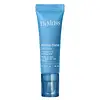What's inside
What's inside
 Key Ingredients
Key Ingredients

 Benefits
Benefits

 Concerns
Concerns

No concerns
 Ingredients Side-by-side
Ingredients Side-by-side

Diisostearyl Malate
EmollientCapryloyl Glycerin/Sebacic Acid Copolymer
Skin ConditioningBis-Diglyceryl Polyacyladipate-2
EmollientGlycerin
HumectantHydroxystearic/Linolenic/Oleic Polyglycerides
EmollientMyristic/Palmitic/Stearic/Ricinoleic/Eicosanedioic Glycerides
Skin ConditioningRicinus Communis Seed Oil
MaskingSqualane
EmollientWater
Skin ConditioningRosa Damascena Flower Wax
MaskingCeramide NP
Skin ConditioningHydrolyzed Jojoba Esters
Skin ConditioningVitis Vinifera Seed Oil
EmollientUndaria Pinnatifida Extract
Skin ConditioningCaprylic/Capric Triglyceride
MaskingTetrahexyldecyl Ascorbate
AntioxidantSodium Hyaluronate
HumectantJojoba Esters
EmollientTocopherol
AntioxidantHydrogenated Castor Oil
EmollientGlyceryl Caprylate
EmollientGlyceryl Undecylenate
EmollientDextrin Palmitate
EmulsifyingDiisostearyl Malate, Capryloyl Glycerin/Sebacic Acid Copolymer, Bis-Diglyceryl Polyacyladipate-2, Glycerin, Hydroxystearic/Linolenic/Oleic Polyglycerides, Myristic/Palmitic/Stearic/Ricinoleic/Eicosanedioic Glycerides, Ricinus Communis Seed Oil, Squalane, Water, Rosa Damascena Flower Wax, Ceramide NP, Hydrolyzed Jojoba Esters, Vitis Vinifera Seed Oil, Undaria Pinnatifida Extract, Caprylic/Capric Triglyceride, Tetrahexyldecyl Ascorbate, Sodium Hyaluronate, Jojoba Esters, Tocopherol, Hydrogenated Castor Oil, Glyceryl Caprylate, Glyceryl Undecylenate, Dextrin Palmitate
Polybutene
Hydrogenated Polydecene
EmollientDiisostearyl Malate
EmollientSqualane
EmollientButyrospermum Parkii Butter
Skin ConditioningPolyethylene
AbrasivePhytosteryl/Isostearyl/Cetyl/Stearyl/Behenyl Dimer Dilinoleate
Skin ConditioningBis-Diglyceryl Polyacyladipate-2
EmollientCaprylic/Capric Triglyceride
MaskingHydrogenated Styrene/Isoprene Copolymer
Avena Sativa Kernel Oil
Skin ConditioningColloidal Oatmeal
AbsorbentPanthenol
Skin ConditioningSilica
AbrasiveCeramide NP
Skin ConditioningTocopheryl Acetate
AntioxidantCetearyl Alcohol
EmollientCI 77120
Cosmetic ColorantPentaerythrityl Tetra-Di-T-Butyl Hydroxyhydrocinnamate
AntioxidantPhenoxyethanol
PreservativeMentha Piperita Oil
MaskingLimonene
PerfumingCI 77491
Cosmetic ColorantCI 15850
Cosmetic ColorantCI 77891
Cosmetic ColorantPolybutene, Hydrogenated Polydecene, Diisostearyl Malate, Squalane, Butyrospermum Parkii Butter, Polyethylene, Phytosteryl/Isostearyl/Cetyl/Stearyl/Behenyl Dimer Dilinoleate, Bis-Diglyceryl Polyacyladipate-2, Caprylic/Capric Triglyceride, Hydrogenated Styrene/Isoprene Copolymer, Avena Sativa Kernel Oil, Colloidal Oatmeal, Panthenol, Silica, Ceramide NP, Tocopheryl Acetate, Cetearyl Alcohol, CI 77120, Pentaerythrityl Tetra-Di-T-Butyl Hydroxyhydrocinnamate, Phenoxyethanol, Mentha Piperita Oil, Limonene, CI 77491, CI 15850, CI 77891
Ingredients Explained
These ingredients are found in both products.
Ingredients higher up in an ingredient list are typically present in a larger amount.
This ingredient is lipid-based synthetic skin-conditioning agent derived from adipic acid and a mixture of fatty acids. It is often called a lanolin substitute.
As an emollient, it helps soften and hydrate the skin. Emollients create a barrier on the skin to trap moisture in.
Due to its fatty acid base, it may not be Malassezia folliculitis safe.
Learn more about Bis-Diglyceryl Polyacyladipate-2This ingredient is an emollient, solvent, and texture enhancer. It is considered a skin-softener by helping the skin prevent moisture loss.
It helps thicken a product's formula and makes it easier to spread by dissolving clumping compounds.
Caprylic Triglyceride is made by combining glycerin with coconut oil, forming a clear liquid.
While there is an assumption Caprylic Triglyceride can clog pores due to it being derived from coconut oil, there is no research supporting this.
Learn more about Caprylic/Capric TriglycerideCeramide NP is a type of ceramide and formally known as ceramide 3.
Ceramides are intercellular lipids naturally found in our skin that bonds dead skin cells together to create a barrier. They are known for their ability to hold water and thus are a great ingredient for dry skin.
Ceramides are an important building block for our skin barrier. A stronger barrier helps the skin look more firm and hydrated. By bolstering the skin ceramides act as a barrier against irritating ingredients. This can help with inflammation as well.
If you would like to eat ceramides, sweet potatoes contain a small amount.
Read more about other common types of ceramides here:
Ceramide AP
Ceramide EOP
Diisostearyl Malate is an emollient and most often used in lip products. It comes from isostearyl alcohol, a fatty acid, and malic acid, an AHA.
As an emollient, Diisostearyl Malate helps create a thin film on your skin to trap moisture in. This helps keep your skin soft and smooth.
Squalane is an emollient that helps the skin hold onto moisture. It's an oily liquid that occurs naturally in certain types of fish and plant oils.
Because squalane boosts hydration in the skin, it also comes with plenty of benefits: it is an antioxidant and can help fight free radicals and skin damage. Squalane is also found to have a detoxifying effect when applied.
Squalane comes from squalene, which occurs naturally within the sebum of our skin. It is one of the oils our skin produces to keep itself hydrated. Squalane is the hydrogenated version of squalene and has a longer shelf life.
Research shows that squalane is non-irritating (even at 100% concentration).
In general, it's a fantastic ingredient. It does a great job at hydrating the skin, and it's suitable for those with sensitive skin.
The source of squalane may impact malassezia / fungal acne. This is because olive oil derived squalane can contain impurities such as fatty acids and plant waxes. Sugarcane derived squalane is recommended for anyone with malassezia concerns.
Is squalane vegan?
This depends on the source. Squalane can be derived from both plants and animals. Most squalane used in skincare comes from plants.
Please note: the source of squalane is only known if disclosed by the brand. We recommend reaching out to the brand if you have any questions about their squalane.
Read more about squalene with an "e".
Is squalane an oil?
Squalane is often called an oil, but it’s technically not; it’s a hydrocarbon, meaning it’s only made of carbon and hydrogen, unlike true oils which are triglycerides made of fatty acids and glycerol.
The term “oil-free” isn’t regulated, so companies can define it however they want. Some exclude all oils, while others just avoid mineral oil or comedogenic oils.
While some people avoid oils thinking they cause breakouts, the right kind of oil (or oil-like ingredient like squalane) can actually help balance and hydrate your skin. It’s worth testing out simple oils or squalane to see what works best for your skin.
Learn more about Squalane